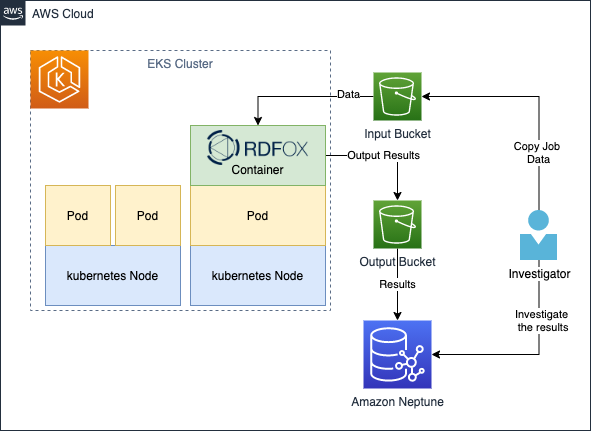AWS Architecture Blog
Category: Compute
Deploying Sample UI Forms using React, Formik, and AWS CDK
Companies in many industries use UI forms to collect customer data for account registrations, online shopping, and surveys. It can be tedious to create form fields. Proper use of input validation can help users easily find and fix mistakes. Best practice is that users should not see a form filled with “this field is required” […]
Running IBM MQ on AWS using High-performance Amazon FSx for NetApp ONTAP
Many Amazon Web Services (AWS) customers use IBM MQ on-premises and are looking to migrate it to the AWS Cloud. For persistent storage requirements with IBM MQ on AWS, Amazon Elastic File System (Amazon EFS) can be used for distributed storage and to provide high availability. The AWS QuickStart to deploy IBM MQ with Amazon […]
How to Run Massively Scalable ADAS Simulation Workloads on CAEdge
This post was co-written by Hendrik Schoeneberg, Sr. Global Big Data Architect, The An Binh Nguyen, Product Owner for Cloud Simulation at Continental, Autonomous Mobility – Engineering Platform, Rumeshkrishnan Mohan, Global Big Data Architect, and Junjie Tang, Principal Consultant at AWS Professional Services. AV/ADAS simulations processing large-scale field sensor data such as radar, lidar, and […]
Automating Anomaly Detection in Ecommerce Traffic Patterns
Many organizations with large ecommerce presences have procedures to detect major anomalies in their user traffic. Often, these processes use static alerts or manual monitoring. However, the ability to detect minor anomalies in traffic patterns near real-time can be challenging. Early detection of these minor anomalies in ecommerce traffic (such as website page visits and […]
Automate Amazon Connect Data Streaming using AWS CDK
Many customers want to provision Amazon Web Services (AWS) cloud resources quickly and consistently with lifecycle management, by treating infrastructure as code (IaC). Commonly used services are AWS CloudFormation and HashiCorp Terraform. Currently, customers set up Amazon Connect data streaming manually, as the service is not available under CloudFormation resource types. Customers may want to […]
Financial Crime Discovery using Amazon EKS and Graph Databases
Discovering and solving financial crimes has become a challenge due to an increasing amount of financial data. While storing transactional payment data in a structured table format is useful for searching, filtering, and calculations, it is not always an ideal way to represent transactional data. For example, determining if there is a suspicious financial relationship […]
Scaling DLT to 1M TPS on AWS: Optimizing a Regulated Liabilities Network
SETL is an open source, distributed ledger technology (DLT) company that enables tokenisation, digital custody, and DLT for securities markets and payments. In mid-2021, they developed a blueprint for a Regulated Liabilities Network (RLN) that enables holding and managing a variety of tokenized value irrespective of its form. In a December 2021 collaboration with Amazon […]
Codacy Measures Developer Productivity using AWS Serverless
Codacy is a DevOps insights company based in Lisbon, Portugal. Since its launch in 2012, Codacy has helped software development and engineering teams reduce defects, keep technical debt in check, and ship better code, faster. Codacy’s latest product, Pulse, is a service that helps understand and improve the performance of software engineering teams. This includes […]
Building Resilient and High Performing Cloud-based Applications in Hawaii
Hawaii is building a digital economy for a sustainable future. Many local businesses are already embarking on their journey to the cloud to meet their customers’ growing demand for digital services. To access Amazon Web Services (AWS) on the US mainland, customers’ data must traverse through submarine fiber-optic cable networks approximately 2,800 miles across the […]
How Ribbon Built a Scalable, Resilient Robocall Mitigation Platform
Ribbon provides communications software, and IP and optical networking end-to-end solutions that deliver innovation, unparalleled scale, performance, and agility to service providers and enterprise. Ribbon is helping customers modernize their networks. In today’s data-hungry, 24/7 world, this equates to improved competitive positioning and business outcomes. Companies are migrating from on-premises equipment for telephony services and looking […]









